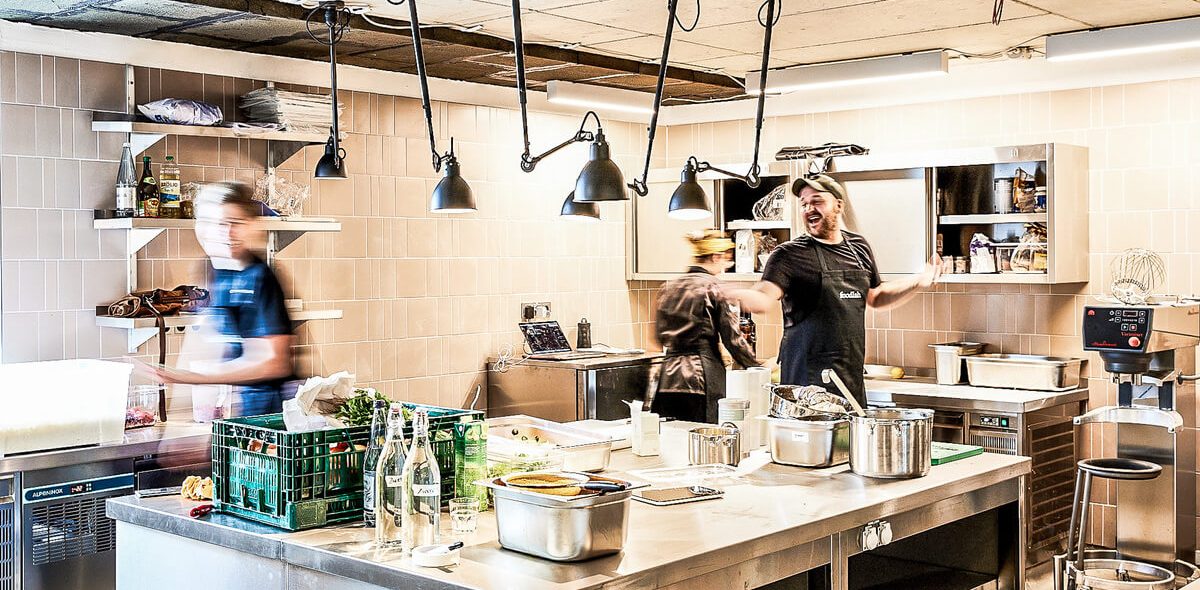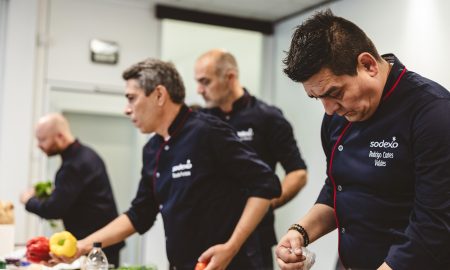Today, the bank counters where customers used to deposit, withdraw or complain that they had no money around 100 years ago, now separate the conference rooms from the café. Ornate brass lamps hang from the ceiling decorated with bronze ornaments. Through the huge windows, sunlight shines onto the simple desks. Architect Henri Cleinge did impressive work here when he created a 12,000 square meter café and coworking space for start-ups and freelancers in the Royal Bank halls, built in the historic quarter of Montreal in the 1920s.
Together we are less alone
Admittedly, not all shared offices or coworking spaces are as architecturally impressive as the Crew Collective & Café in Montreal. But the sector is growing rapidly, not least as a result of the pandemic. Although social distancing caused a significant drop in business for a short time, it also changed the demands we place on the workplace and the way we work. In the “new world of work”, coworking spaces represent a third space between the home office and the office. One where employees can interact with others, both inside and outside the company, and yet are still separate. A place to make new contacts, develop ideas together, expand the professional network and/or welcome customers in a stylish atmosphere. And last but not least, a place where companies have the opportunity to adapt their office space to the relevant projects, thus reducing their fixed costs and the associated financial risk.
View this post on Instagram
In June 2022, there were already more than 28,000 coworking spaces around the world, 6,200 of which were in America alone. According to the Statista Research Department, there will be almost 42,000 by the end of 2024. This corresponds to an annual growth rate of around 21 percent. There is no doubt that the industry has a future and also offers great potential for the gastronomy industry. After all, even though lunch in the company restaurant is no longer possible, one thing is certain: Workers are sure to get hungry at some point. So the only remaining question is how restaurateurs can exploit this potential.
Café and coworking space under one roof
Restaurant owners are killing several birds with one stone by providing space for co-working in their own premises.
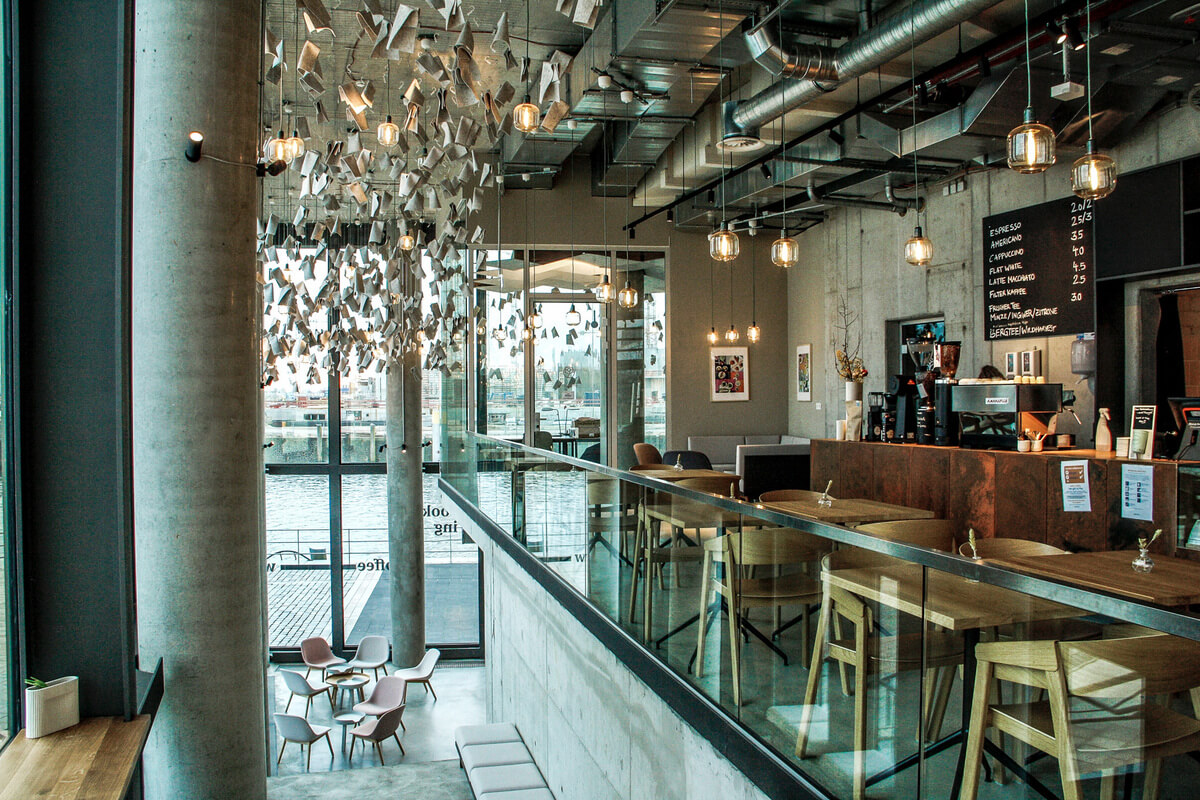
Image: SarahHartel
In addition to snack bars and restaurants that are only open at certain times of the day, such as midday or evening, cafes are particularly suited to this concept, because they usually already have all the prerequisites or facilities required for a shared office: WiFi, power outlets, comfortable seating, access to coffee and, of course, culinary options. Businesses who want to go a step further, like the Crew Collective & Café mentioned at the start, will also set up modern meeting and conference rooms as well as private offices. But what does all this have to do with gastronomy?
Coworking spaces: Opportunities for the gastronomy industry
- Central location of restaurants and cafes: attractive for employees and employers who no longer have to rent large office space
- Generating additional revenue: Rent has become expensive. Additional income is necessary for both cafe and restaurant operators to enable them to continue.
- Extending opening hours without significantly increased expenditure on personnel
- New customers who come not only for food, but also want to work in peace and need refreshments in between. Ideally, the boundaries will blur and customers will visit the cafe or restaurant multiple times, both during work and leisure time.
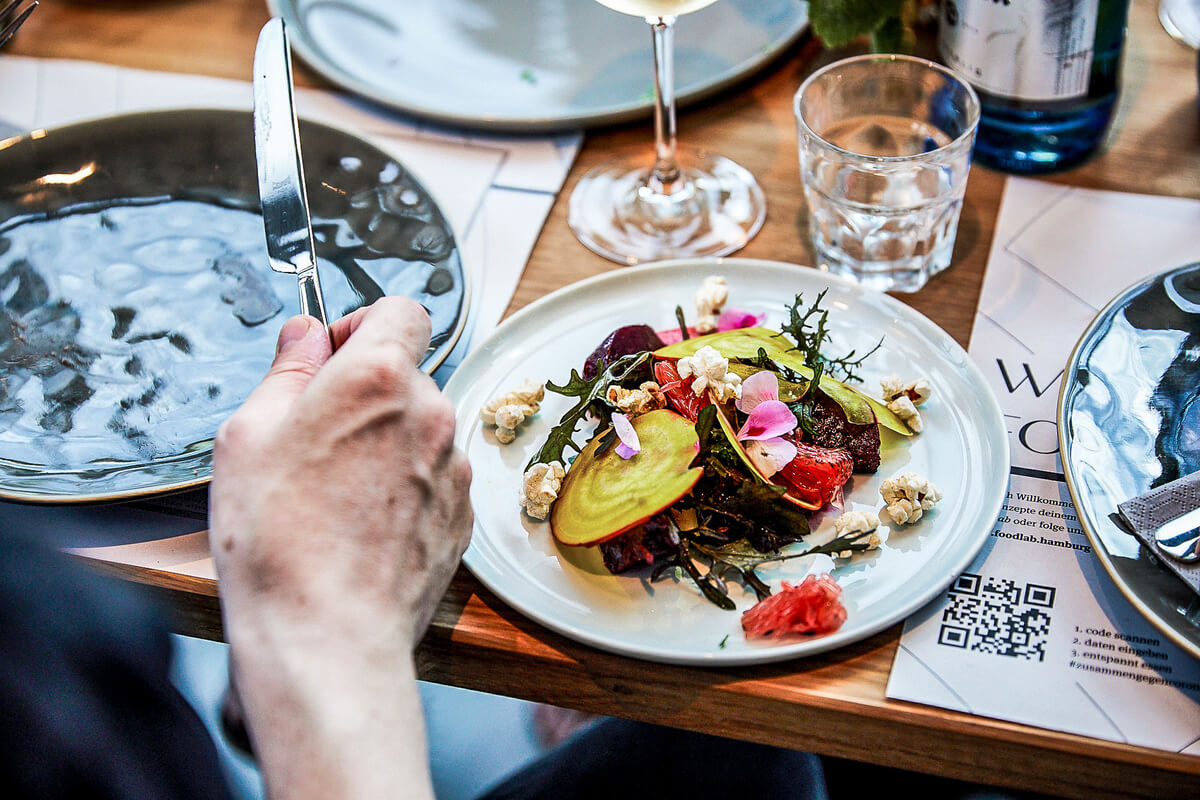
Image: Vivi D. Angelo
Coworking kitchens: Where ideas are put into action and mistakes are permitted
In addition to coworking spaces, so-called coworking kitchens, i.e. shared kitchens, have been around for a while. The major advantage for users/customers: There’s a ready-made place with everything required. In other words: a professional kitchen equipped with top cooking systems can be hired, that offers space to develop, create new dishes or products, or even make mistakes. This is because the organizational effort, costs and associated risk remain manageable with a kitchen concept like this.
Examples of successful coworking kitchens can be found around the world, like the Food Innovation Hub KitchenTown . In addition to test kitchens and offices, the site in Berlin also has its own food laboratory, where start-ups from all over Europe can play around creating the food of the future. KitchenTown in California, on the other hand, offers state-of-the-art kitchen space to rent, including professional kitchen appliances over an impressive area of 20,000 square meters and drives forward the development, commercialization and market launch of new food products.
A dedicated coworking space for the food scene
Another successful model can be found in the heart of HafenCity in Hamburg: the foodlab – a coworking spacespecially designed for the food scene. “As a freelance marketing consultant, food startups were among my clients,” says founder Christin Siegemund. During this work, she discovered a real gap in the market: “There was a lack of a common space with room for exchanges and which could serve as a platform for the industry. This is how my idea was born: To create precisely this space.”
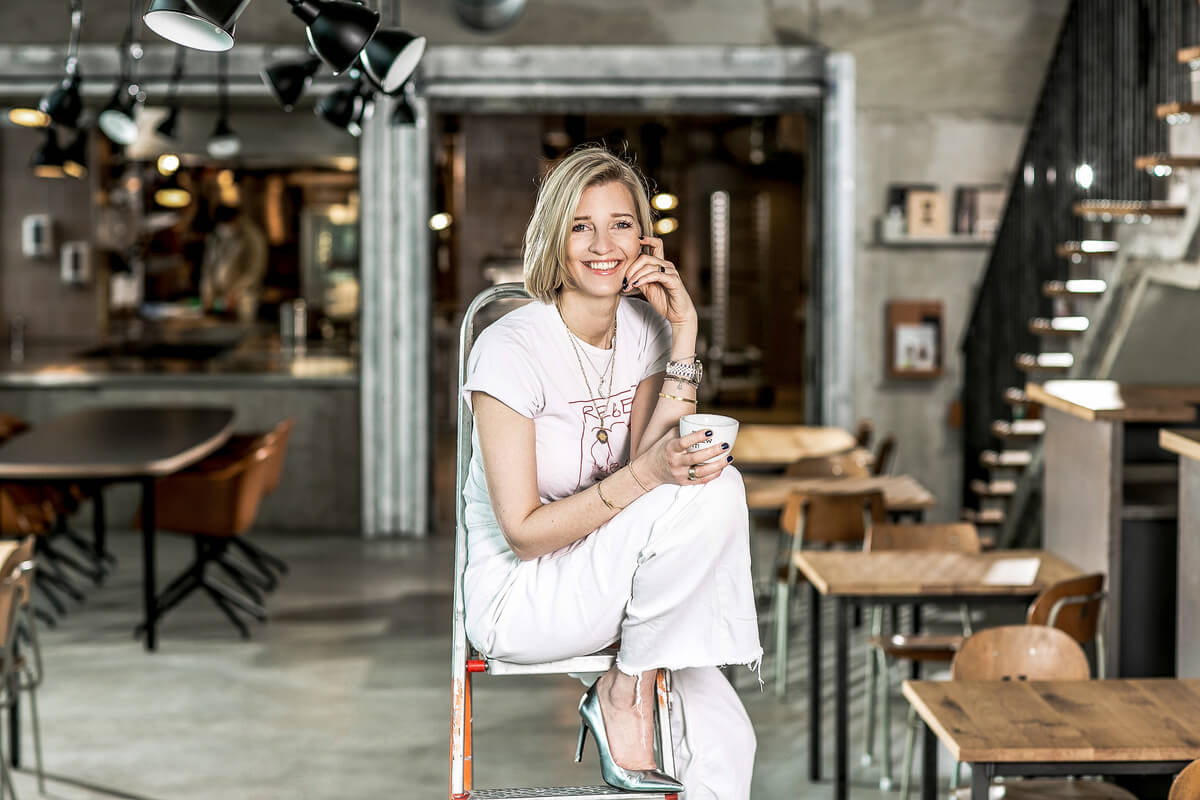
Image: Brita Plath
In 2020, the foodlab was finally created to bring people and know-how together through food and provide food start-ups with the perfect starting conditions. Whether in the coworking space, where product ideas and concepts are refined, or in one of the five professionally equipped commercial kitchens: including a development kitchen, for example, where testings can be carried out in larger and smaller quantities, a production kitchen and an allergen kitchen. The foodlab also includes its own cafe and pop-up restaurant, where workshops and events can be held or new ideas can be tested without having to rent an entire restaurant.
Risk: Start-up industry
But as exciting, innovative and diverse as the industry may be, it can unfortunately also be merciless and cripple projects even before they have really got off the ground. Like the once promising Foodroom in Montreal, Canada’s first coworking kitchen. It was founded in 2015 by Amélie Morenc y. The following year, she was awarded the Young Entrepreneur Award 2016 for entrepreneurs under the age of 25.

Image: Amelie_Morency (private)
“We almost made it; we had almost reached the point where we would have earned money,” she wrote about a year later in a blog on the internet platform Medium. For months, she had been looking for ways to help the company survive. But in the end it wasn’t enough. This was partly because it had already got off to a difficult start and had already exceeded the budget before the opening due to the costs of the conversion work. What made things even more difficult was that many of the start-ups who hired space had their own financial problems, and an option that initially seemed profitable ultimately turned out to be the opposite. Even increasing sales could no longer help and the Foodroom went bankrupt.
Recipe against insolvency?
Would she do it again? “Definitely,” writes Amélie Morency, but she would do a lot differently/better. She now passes on her expertise to food start-ups and catering companies, helps them to build their business and prevents them from making the same mistakes as she once did when setting up her coworking kitchen.
- Choosing the right business partners
It’s important to choose business partners with values that match your own and who you also get on well with personally. “The ones I got along with didn’t sue me, they called me to ask how I was doing. They were the ones who kept me from losing my mind,” Morency advises. - Win-win for both parties
When concluding a contract, you should ensure that both parties stand to gain and are satisfied with the contract. - Better management of operating costs
An essential component for the success of the company is to regularly keep an eye on operating costs so that any necessary measures can be implemented at an early stage, thus avoiding the threat of insolvency. - Sales and budget with a buffer
Forecasts regarding duration and costs are usually underestimated, which is why the expert recommends halving the sales forecasts and doubling the budget. Ultimately, everything takes longer than planned and costs more than expected.
Definitely valuable tips that every prospective entrepreneur or restaurateur who is thinking about the concept of coworking space or coworking kitchen should consider. So in her case, there’s a happy ending. At least for her and hopefully also for her customers, who she ideally hopes to help avoid failure.


